Becoming a Tradition-Synonymous Brand
In 1924, employees of the Macy’s department store, looking for a way to celebrate Thanksgiving, marched down 34th Street in New York City dressed in vibrant costumes, with floats, bands and live animals. This began an annual tradition that today is watched by over 44 million people each Thanksgiving morning and stands as the second-oldest Thanksgiving Day parade in the country.
For years, this was my only exposure to the Macy’s brand. Although I grew up in an area with no Macy’s locations nearby, it was one of the most well-known brands of my childhood, an achievement attributed solely to its name gracing the parade that played on the television every Thanksgiving morning.
I doubt I’m the only person who has that same story and brand connection – which, if you think about it, is quite a feat for a three-hour event that comes once a year.
Outside of fireworks shows and cookouts by the pool, to many Americans, the 4th of July means the Nathan’s Famous Hot Dog Eating Contest. Thousands of attendees and millions of television viewers tune in for the Independence Day tradition, spearheaded by a brand with little equity outside of its native Northeast, but which is now synonymous with the holiday and the event.
These are just two examples of how a brand has attached itself and eventually become synonymous with a holiday tradition. They’ve reached outside of their usual consumer audience and established brand equity with a portion of the marketplace with little to no brand knowledge outside of the name association.
In doing so, they did something no advertising or marketing campaign could do – they became connected to tradition.
Consumers love tradition. They love familiarity, regularity and nostalgia. Traditions bring out strong, deep, ingrained emotions within an individual, and to hitch your brand to this is to elevate it to this level.
In doing so, you provide a shortcut to the summit of the brand equity mountain – creating an emotional connection between the consumer and your brand. Once established, you have put your brand ahead of the pack within your space, as consumers who are unsure of the specifics of each brand within a category will ultimately choose the one they are either more aware of or have an emotional connection with.
For the most part, success in sales figures and choices from consumers across brands is even when it comes to core consumers and those who have strong brand loyalty. The difference between being at the top of your space and falling behind comes in pulling in the “unaffiliated” consumers – those with no preconceived loyalty to a specific brand, whose purchasing choices come from other factors, such as price, quality and, particularly important to this topic, brand familiarity.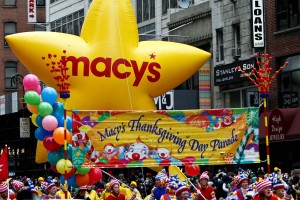
Back to the Macy’s example. They are the crème de la crème of tradition-synonymous brands, not only because their name is attached to an event on a holiday that itself is synonymous with nostalgia, but also because watching the parade has become second nature to many families on Thanksgiving, who refer to it not as just a “Thanksgiving Parade” but as the “Macy’s Thanksgiving Parade” or even just the “Macy’s Parade.”
As such, if these same consumers were at a mall with their choice of department stores to enter, and had no prior knowledge of the ins and outs of the store brands available, odds are very good that they would tap into their emotional brand connection and choose Macy’s.
In the department store space, the majority of the brands are on equal footing. Their pricing is very similar, the products they carry don’t vary widely from brand to brand, and they all have sizeable presences in the consumer marketplace.
So how can Macy’s separate itself and drive consumers into the store and into the purchasing mindset? By being connected. It doesn’t hurt that the very thing they are connected with sits at the start of the biggest shopping time of the year – when the masses hit the stores at 3 a.m. on Black Friday, the images of the Macy’s parade are still fresh in their sleep-deprived minds.
Such is the goal for brands looking to find their tradition match – expand the brand, connect with consumers and become permanently attached to the event or holiday.
4 Characteristics of Leaders that Help Build Strong Brands
As with most aspects of business, a successful branding effort starts at the top. The brand must be developed in such a way and with an end product that provides for easy and full buy-in from leadership across the organization.
But what is often overlooked is how the characteristics of the brand are not the only factors involved in leadership’s role with the brand. In fact, it is a two-way street. Leaders who wish to preside over successful brands must also possess certain characteristics in order to utilize their role in the organization to the fullest extent when dealing with the brand.
- Understanding of the Importance and Impact of Brands
In order to fully integrate branding into their business mindset, they must first and foremost have a strong understanding on why it matters in the overall organizational picture. These leaders know that a strong and differentiating brand is often a crucial element to success, and in addition, know all of the various areas of business a brand will impact.
- Knowledge of the Brand’s Target Audience
When developing a brand, an initial step in the process is identifying the key target audiences to whom the brand will ultimately communicate. Strong brand leaders will be a contributing member of these discussions, as they will have a deep knowledge of these groups and the benefits they could provide for the brand.
- Affinity for Process-Driven Actions
Building a brand isn’t an overnight creation; nor is it an undertaking to go on without a strong plan in place. As such, a strong brand development favors a leader who sees process-driven actions as second nature. They see road maps, strategic planning and data-based decision making as hallmarks of strong organizations, a mindset that translates into strong brands.
- Passion for Living the Brand
It has been said that a brand’s employees are its most important marketers. They are the ones coming face-to-face with the consumer and having the biggest impact on audience reaction to the brand. To repeat a phrase from the beginning of this column, that mindset starts at the top. These employees want to live the brand and they look to the leadership for motivation and guidance in doing so. If the most visible brand advocates aren’t passionate about the brand, it makes it very difficult for those under them do be that way.
A leader’s impact on the brand is massive. In that sense, branding is identical to a vast majority of the other sections of a business or organization. It’s also no coincidence that many of these characteristics can also be applied to quality leadership in general – building and sustaining a successful brand is not a foreign concept, it’s one that can easily mirror your business actions.
Has your company recently experienced change or growth? Due to changes in business strategies, acquisitions, internal organizational changes or the addition of new products to a portfolio, your brand strategy may need to evolve over time. Click here to download your free copy of “Your Brand’s Guide to Corporate Change” today, and learn how to align your brand and business strategy for success!
How to Boldy Go Where Your Brand has Not Gone Before
As consumers, we are used to certain consistencies. We get used to the way things are, a feeling that extends to our interactions and connections with brands. We have come to expect that certain brands will exist in certain areas – that Coca-Cola will be a in the soda aisle at the grocery store, and that if we want to buy a new computer, we head to the electronics store.
But what happens when the comfort zone is compromised, when brands begin to enter an industry previously untouched by their branding efforts?
In a recent article, author Liam La Guerre discussed a number of new “lifestyle hotels” that were opening in the near future, backed by some unexpected brands.
For instance, fitness brand Equinox is planning to opening 50 new brand-centric hotels around the world, starting with the flagship hotel in New York City, complete with a 60,000-square-foot Equinox fitness center within the hotel footprint.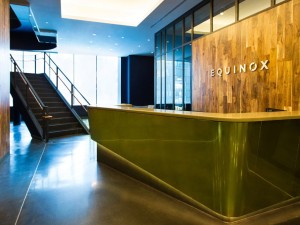
Additionally, a number of furniture brands are also opening branded hotel locations, which will seemingly double as showrooms for their products, allowing guests to really expand the ability to “test drive” the furniture featured in their rooms.
Hotels aren’t the only examples of brands breaking the consumer comfort zone mold – brand extension has been a brand strategy for years, teaming brands together to expand their footprint and introduce themselves to a new audience. From Hermes entering the Apple Watch accessory space to Harley releasing branded cake decoration kits, brands have long looked for these opportunities.
The big question facing all of these is how far their original brand can carry the new extension – especially when the efforts are starting from scratch when it comes to brand recognition and equity in the new space.
In doing so, these brands should adopt a hybrid brand strategy, where their mindset is part start up and part brand loyalty-focused, an admittedly unique situation. The Equinox hotel, for instance, is a startup in the hotel industry, faced with the challenges that come with that status, such as building reputation and trust among both consumers and the industry as a whole. To counter, they have made the decision to not just use the hotel as an extension of their portfolio, but an extension of the Equinox brand itself.

This is a brand with loyal and reliable consumers, who not only flock to the fitness centers because of the services they offer, but because they have an emotional connection with the brand itself. They value fitness, which the hotel is putting front and center, and they value the Equinox commitment to a lifestyle similar to theirs. The hope, when they stay at one of these hotels, is that this lifestyle and connection will extend to beyond their time working out, but to their whole stay.
To brands looking to find new areas in which they can establish a presence – find your unique. Find how your brand makes consumers feel, experience, think, etc. – whatever makes you stand out. Then the key to a successful new brand entry – you must convince your consumers and potential consumers that what they are getting in the new offering will evoke the same feelings and connections as the branding it carries, which they couldn’t find anywhere else.
That is how you can break the mold, using the unique to bridge the gap between your brand and your new offering.
Has your company recently experienced change or growth? Due to changes in business strategies, acquisitions, internal organizational changes or the addition of new products to a portfolio, your brand strategy may need to evolve over time. Click here to download your free copy of “Your Brand’s Guide to Corporate Change” today, and learn how to align your brand and business strategy for success!
Oh The Places Your Logo Will Go: Unexpected Mediums that Must be Considered in Visual Branding
When working through the visual branding process, especially in logo design, there are a few obvious places the logo will need to be displayed, such as office signage, business cards and websites/social media platforms. But it’s not enough to simply perform in the usual logo locations - in today’s increasingly diverse mediums in which logos will be deployed, logos must perform as they are needed, no matter the new and unexpected places they might be found.
The impacts of this shift can be seen in recent design trends, including the rise of “modernized” logo designs, which de-emphasize intricate details in favor of simplified, smoother logos. These new looks carry a value in their ability to be easily replicated across various platforms and sizes. Other design trends, including wordless, icon-only logos and the development of animated versions of a logo, also carry a valuable nimbleness that translates across mediums.
 Those overseeing these visual brand developments should be wary of committing a total focus to these logo applications at the expense of the overall visual brand experience. It can be easy to slip into the opposite mindset, putting so much focus on ensuring the logo looks great when scaled down to a website icon-sized replica that when scaled up and applied to the usual areas, the overall look is compromised. It is a fine line between a logo that is solid on all ends of the size spectrum and a logo that excels in one but lacks in another.
Those overseeing these visual brand developments should be wary of committing a total focus to these logo applications at the expense of the overall visual brand experience. It can be easy to slip into the opposite mindset, putting so much focus on ensuring the logo looks great when scaled down to a website icon-sized replica that when scaled up and applied to the usual areas, the overall look is compromised. It is a fine line between a logo that is solid on all ends of the size spectrum and a logo that excels in one but lacks in another.
This isn’t to say that the strategy should be one logo only, no changes, no variations, no matter what. In this case, consistency leans more along the lines of keeping key elements the same, but allowing for leeway in full usage or secondary marks. Many of the most successful visual brands have secondary or alternate logos, most of which are made specifically for a type of application. For instance, if a logo is mostly vertical but is going to be applied to a horizontal-focused medium, it would be time for a variation that still holds onto some essential brand elements but doesn’t compromise in quality.
More places to have a logo means more opportunities to get your brand in front of consumers to build brand equity. But if the consumer can’t easily connect the smaller or alternate logo back to your overall brand, you are missing out. As such, design with key brand elements in mind. Do you have a dominant color scheme, like the UPS brown, or a unique shape, like the
McDonald’s arches? Put these at the forefront of your design. That way, no matter what version, size or application a consumer sees your logo in, there will be an inherent ease in connecting it back to your overall brand.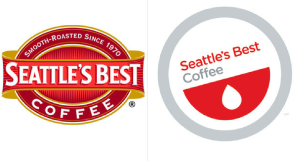
A bonus piece of advice when working on this type of logo design - strong brands in general all possess these standout elements, so if you’re struggling to identify which should be the driver in your logo design, it may be time to go back and look at your brand development strategy.
Visual branding will be somewhat driven by the evolving and ever-advancing ways in which we consume our brands, and as such, the cornerstone of the visual brand development – the logo – will be will be required to follow suit. These strategies and best practices will help ensure that your logo works for your brand as well as possible, no matter what platform it is given.
Has your company recently experienced change or growth? Due to changes in business strategies, acquisitions, internal organizational changes or the addition of new products to a portfolio, your brand strategy may need to evolve over time. Click here to download your free copy of “Your Brand’s Guide to Corporate Change” today, and learn how to align your brand and business strategy for success!
AW in Review - Addison Whitney Brand Salsa Recap 10.21.16
Welcome to our almost-Halloween edition of the AW in Review, our roundup of our latest brand salsa and Addison Whitney news and posts!
Don’t forget, you can stay up-to-date with everything from Addison Whitney by joining the conversation with us on our social media channels – Twitter, Facebook, LinkedIn and Google+.
Why You Should Keep The Focus In Your Brand Development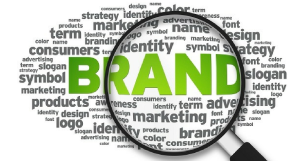
When it comes to brand building, this constant starting over and relying on chance-based efforts take up time and money, two crucial components to successfully build and create a brand.
On the contrary, a focused, targeted and well-strategized brand building campaign will yield results at a much higher rate, and will provide the necessary data of what works and what doesn’t works to help build the road map moving forward. Read More...
Age Is Just A Number: 5 Ways Established Brands Can Stay Young
There are few things worse for a company’s image than to be seen as one that believes they can connect with today’s consumers, despite overwhelming evidence to the contrary.
So how do you ensure that your brand takes the right path to stay relevant and modern? Here are five ways that established brands can prove that age is just a number. Read More...
The Big Transition: What To Do With Your Brand Following A Merger Or Acquisition
Far too often a brand strategy is overlooked in the M&A process, or brought to the table too late to have an impact in anything except final implementation. Whenever it happens, it is important to develop a communication plan that addresses both internal and external audiences.
This plan should break down the individual audiences in detail and outline what they should know and when, including the appropriate verbal and visual brand implementation for each instance. Read More...
Iconic Logo Timeline Shows There’s No One Way To Evolve
Logo evolution is a natural part of the branding process. In fact, the evolution of the overall brand is common, and often necessary, in order to keep up with the latest advancements in the marketplace and ever-changing consumer mindset.
But how a logo “should” evolve is still up for debate. Read More...
How To Use Brand Positioning To Start Your Brand Development
That is why creating a strong positioning statement is such an important starting point.
It will lay out some of the key aspects of the brand building process, pointing out the end goal, the basic characteristics or big idea, and some of the steps to get the brand to the top. Read More...
Why You Should Keep the Focus in Your Brand Development
We’ve all heard of “shotgun marketing,” where a campaign’s messaging is, without much direction or specificity, “shot” into the market place, with the hope that something along the line will hit.
We’ve also seen how poorly these campaigns often perform, banking on long odds and a sense of faith that the campaign may connect with a minor percentage of the target audience. Not only is this a high-risk, often low-reward tactic for a brand’s messaging, it’s also one that fails to establish any momentum beyond its own time frame.
This is because even if there are a few, scattered instances of success with the audience, there is little opportunity to record and analyze what exactly made it work. As such, the tendency will be to follow a similar game plan for subsequent campaigns.
When it comes to brand building, this constant starting over and relying on chance-based efforts take up time and money, two crucial components to successfully build and create a brand. Especially in the beginning of the brand’s life cycle, it is vital that momentum is built to allow the brand to launch with a strong foundation and keep it moving through the ups and downs.
On the contrary, a focused, targeted and well-strategized brand building campaign will yield results at a much higher rate, and will provide the necessary data of what works and what doesn’t works to help build the road map moving forward. These brands are built by identifying early on who their target audience will be, and catering the messaging to fit the wants and needs of these consumers.
Additionally, because the brand is employing repetition and familiarity in its messaging, the audience’s recognition of the brand will take hold quicker and more firmly throughout the campaign.
In other words, building a brand can be compared to a marathon race. The starting line is your initial brand strategy kick off, and the finish line is the product launch – but in between, you must navigate numerous hills along the path, powered only by your growing brand equity and messaging success.
With an unfocused brand building strategy, it will be a slow and bumpy road, as the brand moves forward with each scattered success and then stops as the other poorly aimed efforts fall flat. Trying to cross the hilly terrain and reach the finish line will be a trip filled with false starts, more difficult than it should be as the brand yearns to find momentum.
However, a focused brand building strategy allows for gradual building of brand equity and a higher success rate, so as the brand runs up the first hill, it is growing faster and stronger, allowing for the subsequent ups and downs to become minor bumps in the road.
What are some other ways brands can ensure a focused strategic direction? Aside from having a clear and well-defined target audience, the consistency of the remaining brand elements also play a part. In particular, this means that the visual and verbal branding efforts must work in tandem to build the brand, instead of staking out on their own and hoping there can be some sort of connection established later on.
Additionally, these two elements must tie back to the overall brand positioning. The brand name in particular is a highly visible aspect of a brand, no matter where in the building process is currently falls, and making it difficult for the audience to connect the name back to the core purpose of the brand is an unnecessary hurdle to create, and will turn off some key members of the audience.
There’s a reason brand building and brand strategy discussions often include the words “road map” – a good brand is built when the process is planned and the end goal is within sight. When embarking on this journey, keeping the focus is key to staying on track and ensuring that your brand ends up where you want it to be.
Has your company recently experienced change or growth? Due to changes in business strategies, acquisitions, internal organizational changes or the addition of new products to a portfolio, your brand strategy may need to evolve over time. Click here to download your free copy of “Your Brand’s Guide to Corporate Change” today, and learn how to align your brand and business strategy for success!
Age is Just a Number: 5 Ways Established Brands Can Stay Young
There are few things worse for a company’s image than to be seen as one that believes they can connect with today’s consumers, despite overwhelming evidence to the contrary. Misguided efforts to force their out-of-touch branding onto current audiences can come off as forced and counter-productive.
But on the other end of the spectrum, when these established brands, made up of some of the oldest and longest-lasting brands on the market, are successfully able to connect with the wants and needs of today’s consumers, they can reinvigorate the brand, potentially introducing it to an entirely new audience.
So how do you ensure that your brand falls in the latter category? Here are five ways that established brands can prove that age is just a number:
- Keep your ear to the ground
One of the most common missteps when a brand is unsuccessful in updating their brand image is that their strategic direction has no connection with current best practices. This inward-only focus ignores what is seeing the best results in the marketplace, which often leads to messaging that falls flat. Instead, brands should identify the reasons behind the successes, and work to incorporate these strategies and tactics in ways that align with their larger goals.
- Don’t run from your past
The long lifespans of these established brands aren’t by accident; there must be something about the brand that has driven consumers to continue their connection and keep it afloat over the years. This is not something that is easily attained, and as such, it should not be brushed aside, even when looking to modernize the brand. The brand equity possessed by these brands can give a head start to new strategies and campaigns by providing built-in consumer awareness and providing the benefit of the doubt for future moves. This is partly because of the power of nostalgia in branding, and also because of the gravitas given to brands with proven track records.
- But do accept that it is in the past
However, there is a difference between leveraging the past as an advantage and steadfastly clinging to it no matter what. As the saying goes, it’s important to put the past behind you. Those brands who are firmly planted in the “out of touch” category almost always are victims of an inability to move forward. The mindset of “well it’s worked in the past, it will always work” and an unwillingness to evolve is something all brands, not just those with long histories, should avoid.
- Keep everything in perspective
Decisions made with an eye solely on the short-term at the expense of sustained, long-lasting achievements will often start out strong then fade quickly, leaving the brand scrambling to revise their strategy to keep up. For instance, an updated logo may be a good strategic move for the brand, but should not be paired with a total name change, effectively doing away with two crucial brand elements that lead the way in customer recognition. If your brand is looking to update, work toward achieving a balance between immediate results and long-term sustainability. Also, don’t change your brand so much that it becomes unrecognizable, rendering the “established” of “established brand” moot.
- Where you say it is as important as what you say
When looking to use social media to communication a brand’s message, the adage of trying to be everything to everybody leading to being nothing to nobody rings true in this aspect. When choosing the message outlets, brands would be wise to carefully examine each platform’s audience, message format and viewing trends to establish the correct ones to pursue. For example, if your brand is very visually strong and has outstanding brand imagery, a platform like LinkedIn would be lower on the list in favor of visually-driven sites like Instagram and Facebook.
As your brand ages, these five steps will help ensure that it ages gracefully, and possibly, gives a new lease on life to the brand’s successful lineage.
Has your company recently experienced change or growth? Due to changes in business strategies, acquisitions, internal organizational changes or the addition of new products to a portfolio, your brand strategy may need to evolve over time. Click here to download your free copy of “Your Brand’s Guide to Corporate Change” today, and learn how to align your brand and business strategy for success!
Iconic Logo Timeline Shows There's No One Way to Evolve
Logo evolution is a natural part of the branding process. In fact, the evolution of the overall brand is common, and often necessary, in order to keep up with the latest advancements in the marketplace and ever-changing consumer mindset. But how a logo "should" evolve is still up for debate.
The below infographic by The Logo Company shows how a number of iconic brands have tweaked and shaped their logos over the years. And one thing is abundantly clear: the debate on whether there is a single definitive way to evolve a logo is over. The data overwhelmingly disputes the validity of one-size-fits-all logo evolution, driving home the point that each logo should keep the brand at top of mind and at the forefront of its evolution.
Dave Dixon, Senior Graphic Designer at Addison Whitney, sees a number of unique strategies within the logo evolution examples.
"A lot of these, like BMW, VW, and Shell, have really focused on using logo evolution to clean up and streamline their logos," he says. "To me, that indicates strong brand equity and a logo that illustrates the importance of brand building over communicating something extremely specific. The Shell logo, for example, doesn’t tell you that it’s a fuel/energy company or anything else about the business. But it’s unique and recognizable, so it does a better job than most other logos.
"The YMCA logo is probably the best example of an organization that felt they needed a new direction. The current logo is pretty clearly more youthful, energetic, and fun than the previous versions. It seems more friendly and accessible, which is a departure from the earlier logos."
He points out that the Windows logo is possibly the most interesting progression, mentioning how it has almost come full circle at this point - the current logo has far more in common with the original logo than with any of the iterations in between, speaking to the importance of simplicity and recognition over specificity and trendiness.
Full-circle logo design, new directions, specific communication vs. brand building efforts - the evolution of brands and logos has it all, and more. The one thing in common for them all is that they are all done within the premise of building a strong brand, and stressing the importance of continuity among the most recognizable brand elements. Whether it is a color scheme, a shape or a wordmark, a good logo evolution will build on the existing brand equity. Even if they all take use different blueprints in the building process.
AW in Review - Addison Whitney Brand Salsa Recap 9.23.16
Welcome to our fall-is-finally-here edition of the AW in Review, our roundup of our latest brand salsa and Addison Whitney news and posts!
Don’t forget, you can stay up-to-date with everything from Addison Whitney by joining the conversation with us on our social media channels – Twitter, Facebook, LinkedIn and Google+.
Function Or Feeling – How Will You Position Your Brand?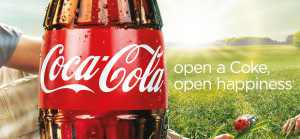
Successful brands have purpose. They have pre-determined areas of differentiation and a target audience. They have a brand position. With this sense of direction, they can focus their branding efforts in the same direction, allowing for the full effectiveness to shine through.
When creating your positioning strategy, there are two main aspects to use as starting points – function or feeling. But which one’s right for your brand? Read More...
Brand Loyalty – How Easy Is It To Achieve?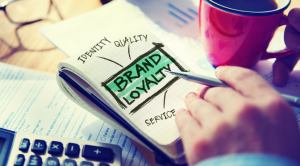
We all value loyalty – it’s one of the main reasons people get dogs as pets. It’s also why brand loyalty is such a prized accomplishment when brand building.
Fear not, brand creators. Achieving brand loyalty can be done. The first step is to believe that it can be done, and be done with the brand you will have – take the aforementioned reasons for dismissing and take them out of the equation. Read More...
When Less Is More In Logo Design And Visual Branding
As brands and logos have evolved over the last several years, it’s become evident that simplicity and minimalistic design is a key new direction for modern brand marketing.
Even the most iconic brands and logos are following the mindset of “less is more” when it comes to their designs. From less detailed images to geometrically-inspired outlines, brands are embracing a clutter less existence. Read More...
Brand Engagement In An Ever-Connected Marketplace
In the not-so-distant past, brand engagement was, like most media and advertising efforts, easily calculated, tracked and controlled. This is no longer the case.
Today, brands are faced with both the ease and the issues that come with online brand engagement opportunities, where measurement is tracked via software programs and engagement rates are dependent on the consumer. Read More...
Function or Feeling - How Will You Position Your Brand?
Nobody wants a directionless brand. Wandering through the consumer world, aimlessly latching on to the newest flavor of the month trend, hoping to find where it truly belongs.
Successful brands have purpose. They have pre-determined areas of differentiation and a target audience. They have a brand position. With this sense of direction, they can focus their branding efforts in the same direction, allowing for the full effectiveness to shine through.
So we now understand that your brand needs a position. The next question is – what is that position going to look like? When creating your positioning strategy, there are two main aspects to use as starting points – function or feeling. But which one’s right for your brand?
FUNCTION:
These brands are built on the foundation of their product or service. With the goal of owning their competitive space, the brand elements all tie back to the points of differentiation between them and the competition.
For instance, Under Armour has built its brand on the strength of its product, specifically its unique athletic wear characteristics. It came into the market touting a product that was unprecedented in the athletic wear space, and Under Armour has taken that advantage as the centerpiece of its brand. Even as it has expanded into other product lines, the brand continues to harken back to itself as a solution to common athletic-related problems across the board.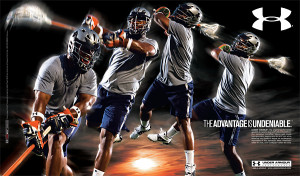
In taking this course of action, a brand must plan not only for today, but for the future. Will your coming products and/or services be able to live up to the standard set by the brand? It’s not enough to have one revolutionary piece to the puzzle, but to position yourself as a functional brand, subsequent pieces much fit much the same way.
This is welcome news to brands that thrive in innovation. Under Armour, Apple, Google – these brands strive to be known for their breakthroughs, and have lived up to the challenge consistently, and as such they have built their brands around this fact. They want their brand to stand out as the leaders in creating products that provide solutions and outstanding experiences for their consumers, time and time again.
FEELING:
Connection. Happiness. Satisfaction. The brands who position themselves through feeling are searching for the necessary alignment with these reactions by their consumers. Their goal is to go beyond that initial interaction an establish an emotional connection that drives brand loyalty and builds brand equity.
Some of these feelings are reactionary, and some are aspirational. Reactionary-focused brands will look to highlight the immediate feeling or emotional response that comes with brand interaction. Whether it is a beverage brand touting its great taste or a food brand highlighting its healthiness, how the consumer reacts (or hopefully reacts) is the centerpiece of the branding efforts.
Aspirational brands want to shape how the consumer feels, creating and driving home their intended emotional connotations. Luxury brands often lead the way in aspirational feeling branding, positioning themselves as the source of consumer pride – elegant, wealthy, high-class, etc. Their goal is to be the brand that makes the consumer hope to achieve some sort of unattained goal or feeling.
Image Sources
Image 1
Image 2
Header Image








